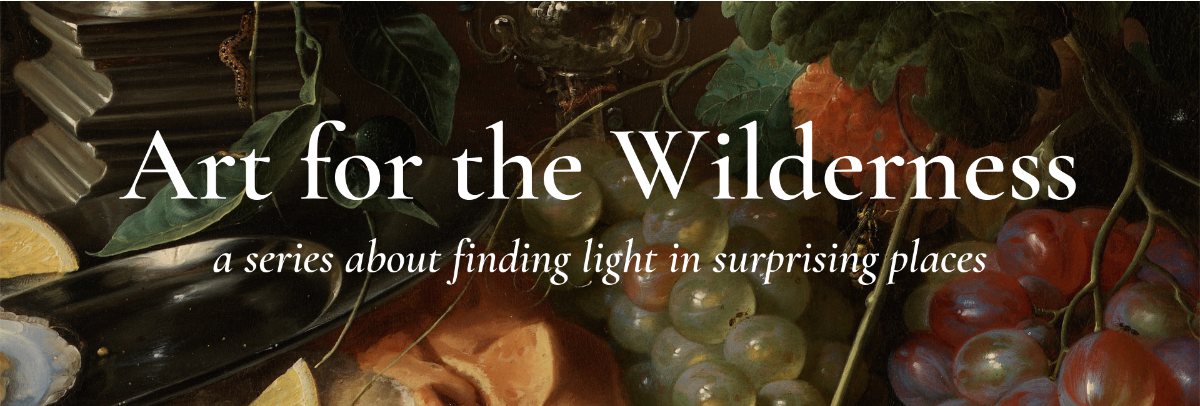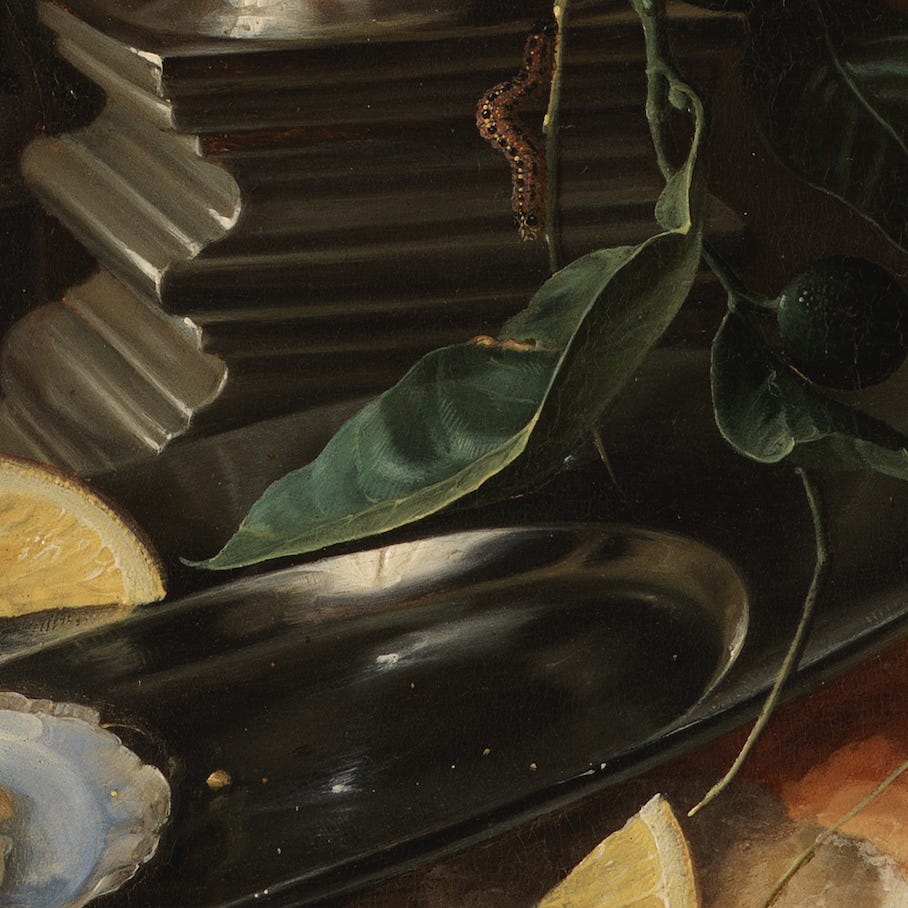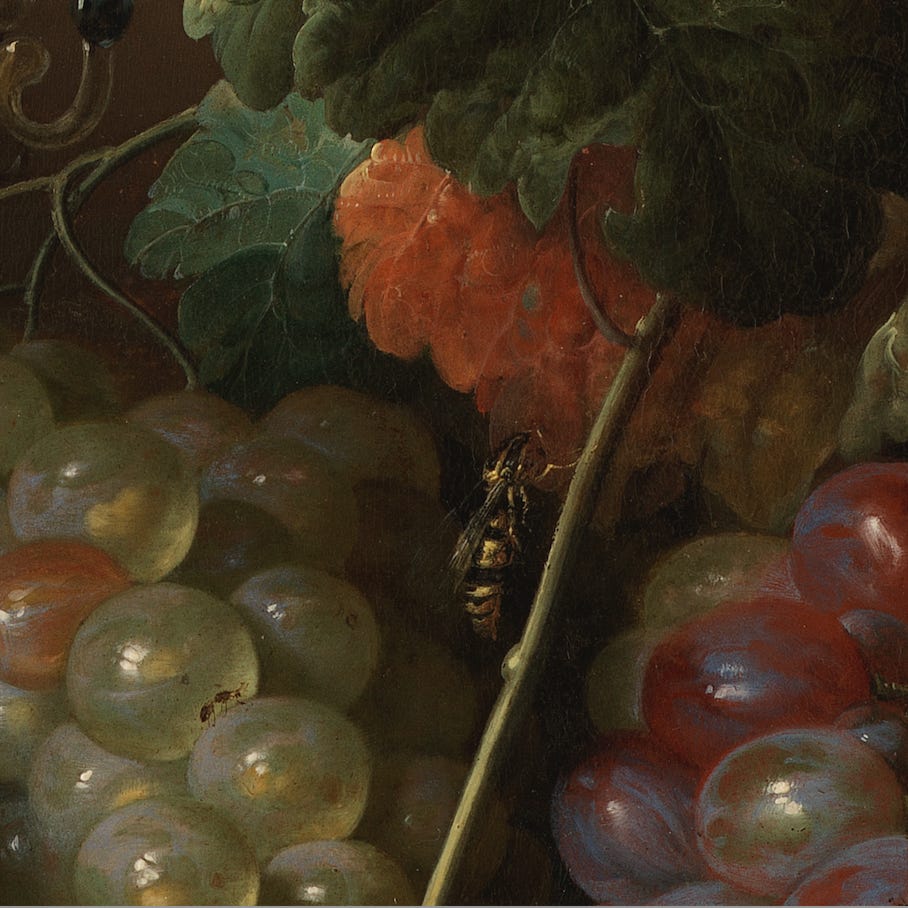Art for the Wilderness 1: Remember You Are Living
Our journey through the wilderness begins with a still life.
This seven-week series explores what we can learn about navigating the wilderness from artists who engage with difficult experiences through their art.
Hello friend,
Welcome to Art for the Wilderness.
Our journey begins with a still life.
Still life paintings are usually experienced in two acts.
Take this painting by Jan Davidsz de Heem, Still Life with Oysters and Grapes. It oozes sensuality, with bursting grapes, plump oysters, velvety fabric, and lemons in provocative states of un-peel. The painting is a pronkstilleven (a Dutch word that roughly translates to "show-off still life"), and the impossibly realistic textures live up to the name. We are seduced by lusciousness.
But as we spend more time looking at it, we begin to notice glimpses of the passage of time. The scene shows us a pause in the action: the table has been set and soon the feast will be consumed. All sorts of bugs crawl over the fruit, and we know that, if untouched, the food will start to decay (how long until those oysters go bad?). This moment is ephemeral, and it was painted to remind us that we are, too. Our bodies are like the grapes, here but for a fleshy moment.
Artworks like this are known as vanitas, and they are designed to remind us of our mortality. Memento mori, they insist, remember you must die. We are invited to contemplate the fleeting nature of time, and that jolts us into realigning our lives with what truly matters.
And we have gotten really good at this reflective second act. Over the past few years, we have had so much practice in clinging to what is most important as we navigate heavy decisions. It is 2022, and we are achingly aware of the fragility of life.
But these conditions do not make it easy for us to sit in that contemplative first act, to give our full attention to the textures around us. It is so hard to open ourselves to the present moment when we are surrounded with reminders of what a dangerous place this world can be.
We are already fluent in memento mori. What we desperately need is a reminder of our aliveness.
So I propose an alternate invitation for our weary hearts:
Memento te vivere “Remember you are living”
This is not “remember you must live”, some guilt-inducing order to seize the day. It is simply a reminder to notice that you are, indeed, living. There is an aliveness coursing through you, sustaining you, nourishing you, holding you. It is always there. Notice it.
And because we are living, we have the capacity to use our senses to connect with the life bubbling all around us.
This open and observant stance makes a strong posture for wandering the wilderness. So, as we begin this journey together, let’s practice easing into the present moment and looking around at what is there. Let's find reminders of our aliveness, even as unanswered questions loom overhead.
We are facing hard things. And, still, there is life.
Over the next week, I invite you to practice using your senses to enter the moment.
When you notice you are stuck in your head, zoom your attention back to what is around you, here in this moment. Look at your life as if it were a show-off still life, and let ordinary moments seduce you with lusciousness.
Another approach is to go inwards. If it feels safe, close your eyes and pay attention to what different waves of emotion feel like in your body. Explore the textures that make up your inner landscape. Not what they mean, just what they are.
The next installment of Art for the Wilderness will be sent out in a little over a week, on Sunday, March 13.
Memento te vivere, friend. Remember you are living.
Warmly,
KEEP EXPLORING
Listen to a poet talk about still lifes and reflect on the commonalities between poets and painters. (This is part of a gorgeous primer on Dutch painting by The Met).
Learn more about vanitas and memento mori in art from Tate's website.
The painting featured in this email is Still Life with Oysters and Grapes. It was painted in Holland in 1653 by Jan Davidsz de Heem. It is currently in LACMA's collection.









